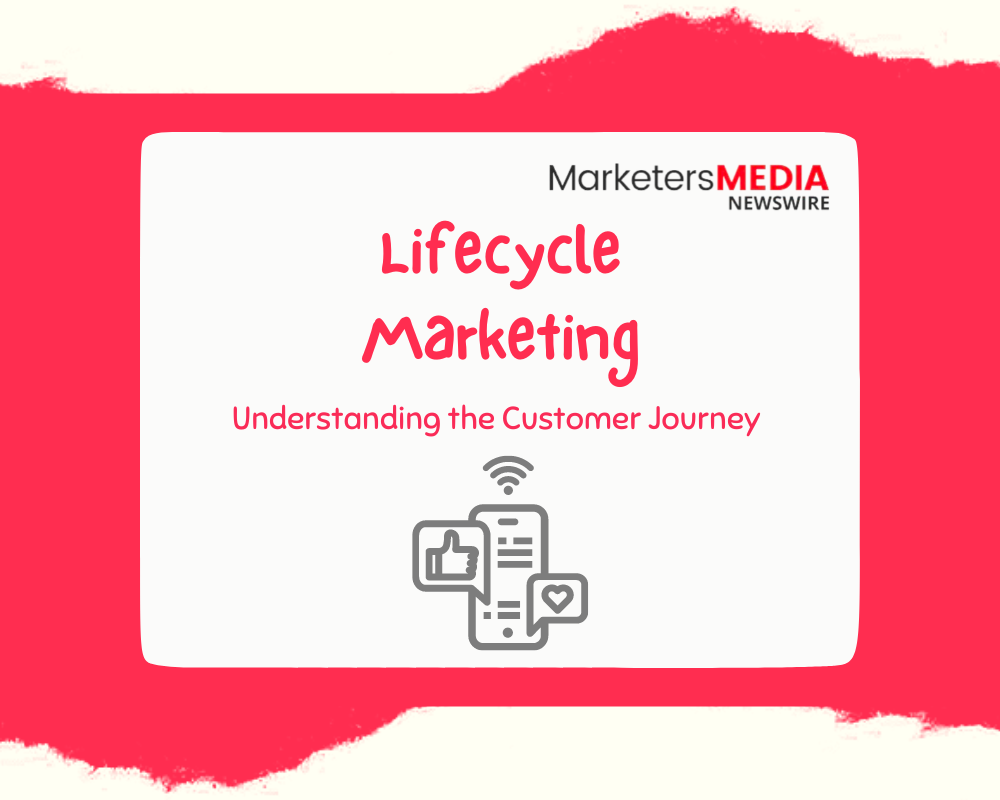Table of Content
- Key Takeaways
- Understanding Lifecycle Marketing
- The Customer Lifecycle Stages
- Lifecycle Strategy Essentials
- The Role of a Lifecycle Marketing Manager
- Crafting a Lifecycle Marketing Plan
- Content Writing for Each Lifecycle Stage
- Email Marketing in Lifecycle Stages
- Analyzing the Customer Journey
- Optimizing Strategies for Lifecycle Stages
- Summary
- Frequently Asked Questions
- Key Takeaways
- Understanding Lifecycle Marketing
- The Customer Lifecycle Stages
- Lifecycle Strategy Essentials
- The Role of a Lifecycle Marketing Manager
- Crafting a Lifecycle Marketing Plan
- Content Writing for Each Lifecycle Stage
- Email Marketing in Lifecycle Stages
- Analyzing the Customer Journey
- Optimizing Strategies for Lifecycle Stages
- Summary
- Frequently Asked Questions
Discover the power of lifecycle marketing, a strategic approach that maximizes customer value through personalized interactions at every stage of their journey. By understanding and catering to the unique needs of customers as they progress from prospects to loyal advocates, businesses can boost engagement, retention, and revenue. This method revolutionizes how brands connect with their audience, creating lasting relationships built on trust and relevance. Embrace the evolution of marketing tactics by implementing a lifecycle strategy that adapts to consumer behaviors and preferences in real-time.
Key Takeaways
- Implementing a lifecycle marketing approach can enhance customer engagement and drive business growth by targeting customers at different stages of their journey.
- Understanding the customer lifecycle stages is crucial for tailoring marketing strategies effectively, from acquisition to retention.
- To succeed in lifecycle marketing, businesses need a well-defined strategy that includes personalized communication, relevant content, and timely interactions.
- A skilled lifecycle marketing manager plays a pivotal role in orchestrating campaigns, analyzing data, and optimizing strategies to maximize results.
- Crafting a comprehensive lifecycle marketing plan involves mapping out touchpoints, setting goals for each stage, and continuously refining tactics based on performance metrics.
- Utilizing email marketing tailored to each lifecycle stage can nurture leads, drive conversions, and build long-lasting customer relationships.
Understanding Lifecycle Marketing
.png?width=550&height=413&name=Lifecycle%20Marketing%20(2).png)
Key Concepts
Lifecycle marketing is a strategic approach that focuses on engaging customers at different stages of their journey. It involves tailoring marketing efforts based on where individuals are in the buying process. This strategy is crucial as it recognizes that customers' needs and behaviors change over time.
The stages in lifecycle marketing typically include awareness, consideration, purchase, retention, and advocacy. Each stage requires a unique set of actions to nurture customer relationships effectively. The ultimate goal of lifecycle marketing is to create long-term customer loyalty by providing value at every touchpoint.
Strategy Importance
A well-defined strategy is the foundation of successful lifecycle marketing. It guides businesses in understanding their target audience's needs and preferences, leading to more personalized interactions. This personalized approach not only fosters customer satisfaction but also contributes to revenue growth.
Effective strategies in lifecycle marketing can significantly impact customer base growth by enhancing customer retention rates and driving repeat purchases. By focusing on building strong relationships with customers, businesses can ultimately turn them into loyal brand advocates, which can further amplify brand awareness through word-of-mouth referrals.
Digital Coordination
Digital platforms play a crucial role in coordinating lifecycle marketing strategies due to their ability to reach customers across various channels efficiently. These platforms enable businesses to deliver targeted messages, offers, and content based on customer behavior and preferences. Utilizing digital tools ensures a more personalized and engaging experience for customers.
The Customer Lifecycle Stages

Awareness Stage
The awareness stage serves to capture potential customers' attention by introducing them to a brand or product. It aims to create initial interest and generate leads. Strategies include social media campaigns and content marketing to attract and engage consumers. Creating impactful first impressions is crucial in this stage to establish a positive brand image.
Consideration Stage
In the consideration stage, customers evaluate their options before making a purchase decision. Providing valuable information such as comparative product guides and customer reviews helps them make informed choices. This stage guides consumers towards understanding the benefits of a product or service, influencing their purchasing decisions positively.
Purchase Stage
The purchase stage marks the conversion of prospects into customers. Simplifying the purchase process with features like one-click checkout enhances the customer experience, leading to higher conversion rates. Post-purchase follow-up through personalized emails or surveys is essential for ensuring customer satisfaction and encouraging repeat purchases.
Loyalty Stage
During the loyalty stage, customers transition into brand advocates who promote products through word-of-mouth referrals and positive reviews. Strategies to foster loyalty include loyalty programs, exclusive offers, and personalized communication. Loyal customers play a significant role in enhancing brand reputation, driving repeat business, and contributing to overall growth.
Lifecycle Strategy Essentials
Strategy Definition
![Business objectives: 5 examples [+ template] | Zapier](https://images.ctfassets.net/lzny33ho1g45/7GlSRzilcUtMUvTI3j8DrK/fbf171742458f0fc62a955c7b167862b/what-to-include-in-a-business-objective.png)
A lifecycle marketing strategy involves planning and executing targeted marketing campaigns throughout a customer's journey. It aims to engage customers at different stages, from acquisition to retention. An effective strategy comprises segmentation, personalized messaging, and strategic touchpoints.
To create an impactful lifecycle marketing strategy, businesses must align their approach with both customer needs and business objectives. By understanding customer preferences and behaviors, companies can tailor their strategies to deliver relevant content at the right time, boosting engagement and loyalty.
Applying Thinking
Applying strategic thinking to lifecycle marketing involves analyzing data to identify opportunities for growth and improvement. Critical thinking plays a crucial role in evaluating the effectiveness of current strategies and making informed decisions for future campaigns. Creativity and innovation are essential in developing unique approaches that resonate with customers.
By leveraging critical thinking skills, marketers can uncover insights that drive personalized experiences for customers. This approach enhances the overall effectiveness of marketing strategies by ensuring that each touchpoint aligns with the customer's journey stage, fostering long-term relationships and brand advocacy.
Analyzing Journey
Analyzing customer journeys is vital in lifecycle marketing as it provides valuable insights into consumer behavior patterns. By tracking interactions across various touchpoints, businesses can identify pain points, preferences, and opportunities for optimization. Data analytics tools enable marketers to gain a deeper understanding of customer behaviors, allowing for targeted messaging and personalized experiences.
Understanding the customer journey empowers businesses to anticipate needs and deliver relevant content at key moments. By analyzing data on customer interactions, companies can refine their strategies to better meet customer expectations and drive conversions.
The Role of a Lifecycle Marketing Manager
Responsibilities Overview
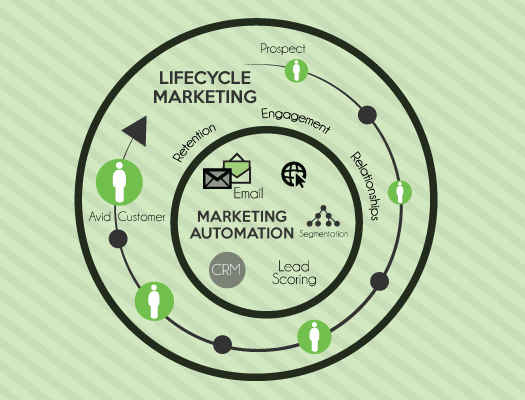
A lifecycle marketing manager plays a crucial role in implementing and overseeing the lifecycle marketing strategy. They are responsible for developing, executing, and optimizing campaigns at each stage of the customer journey. This includes segmentation, targeting, and personalization to enhance customer engagement.
Team members collaborate under the guidance of the lifecycle marketing manager. They work together to ensure that each touchpoint in the customer journey is optimized for maximum impact. From content creators to data analysts, every team member contributes to the success of the lifecycle marketing strategy.
Clear communication and collaboration among team members are essential for seamless execution of the strategy. Regular meetings, feedback sessions, and data sharing help in aligning efforts towards common goals. The lifecycle marketing manager acts as a liaison between different teams to ensure smooth coordination.
Coordinating Strategies
Coordinating strategies across different stages of the marketing cycle is vital for a cohesive customer experience. By aligning messaging, offers, and channels, marketers can create a seamless journey for customers. This ensures that customers receive consistent and relevant communications throughout their interaction with the brand.
Integrated marketing strategies maximize ROI by creating synergies between different channels and touchpoints. When email campaigns, social media ads, and website content work together harmoniously, they reinforce each other's impact. This holistic approach not only improves conversion rates but also strengthens brand loyalty.
Aligning strategies also enables marketers to leverage data effectively across various platforms. By integrating customer data from different sources, marketers can gain deeper insights into customer behavior and preferences. This allows for more targeted and personalized campaigns that resonate with customers on a deeper level.
Enhancing Customer Loyalty
To enhance customer loyalty and retention, marketers focus on building strong relationships with customers. By providing exceptional customer service, addressing concerns promptly, and rewarding loyalty, brands can create a bond that goes beyond transactions. Personalized experiences play a key role in making customers feel valued and appreciated.
Personalization is not just about using a customer's name; it involves understanding their preferences, behaviors, and needs. By tailoring communications based on this information, brands can deliver relevant content that resonates with customers on an emotional level. This leads to increased engagement, repeat purchases, and long-term loyalty.
Creating loyalty programs, offering exclusive deals, and soliciting feedback from customers are some strategies employed by lifecycle marketers to foster long-term relationships. These initiatives demonstrate a brand's commitment to its customers' satisfaction and well-being.
Crafting a Lifecycle Marketing Plan
Defining Objectives
Setting clear objectives is crucial in a lifecycle marketing strategy to ensure focused efforts. It helps in defining specific goals to guide marketing campaigns effectively. Aligning objectives with overall business goals ensures coherence and maximizes impact.
Segmenting Audience
Audience segmentation plays a vital role in lifecycle marketing by dividing customers into distinct groups based on demographics, behaviors, or preferences. This segmentation allows for tailored marketing messages, leading to more personalized and relevant communication with customers. Targeted marketing strategies based on audience segments enhance engagement and conversion rates.
Creating Content
Content creation is fundamental in lifecycle marketing as it drives customer engagement by providing valuable information, entertainment, or solutions. Compelling content resonates with audiences, fostering trust and loyalty towards the brand. Crafting content that speaks directly to the needs and interests of target audiences is key to successful lifecycle marketing initiatives.
Content Writing for Each Lifecycle Stage
Awareness Content
Creating engaging content is crucial at the awareness stage to capture potential customers' attention effectively. Utilize visual elements, such as videos and infographics, to make your content more appealing. Storytelling plays a vital role in creating impactful awareness content by connecting emotionally with the audience.
Consideration Content
Informative content is key during the consideration stage as it helps customers make informed decisions. Provide detailed product comparisons, how-to guides, and customer reviews to assist customers in their decision-making process. Educational content plays a significant role in guiding customers through the consideration stage by addressing their pain points and offering solutions.
Purchase Content
At the purchase stage, focus on creating content that directly influences purchase decisions. Use persuasive language, customer testimonials, limited-time offers, and clear call-to-actions to drive conversions effectively. It's essential to showcase the value of your products or services through compelling visuals and persuasive copy in purchase content.
Loyalty Content
Content plays a crucial role in fostering customer loyalty by nurturing relationships with existing customers. Create personalized content tailored to each customer's preferences and past interactions with your brand. Value-driven content that provides exclusive offers, rewards, and personalized recommendations can significantly contribute to building long-term loyalty among customers.
Email Marketing in Lifecycle Stages
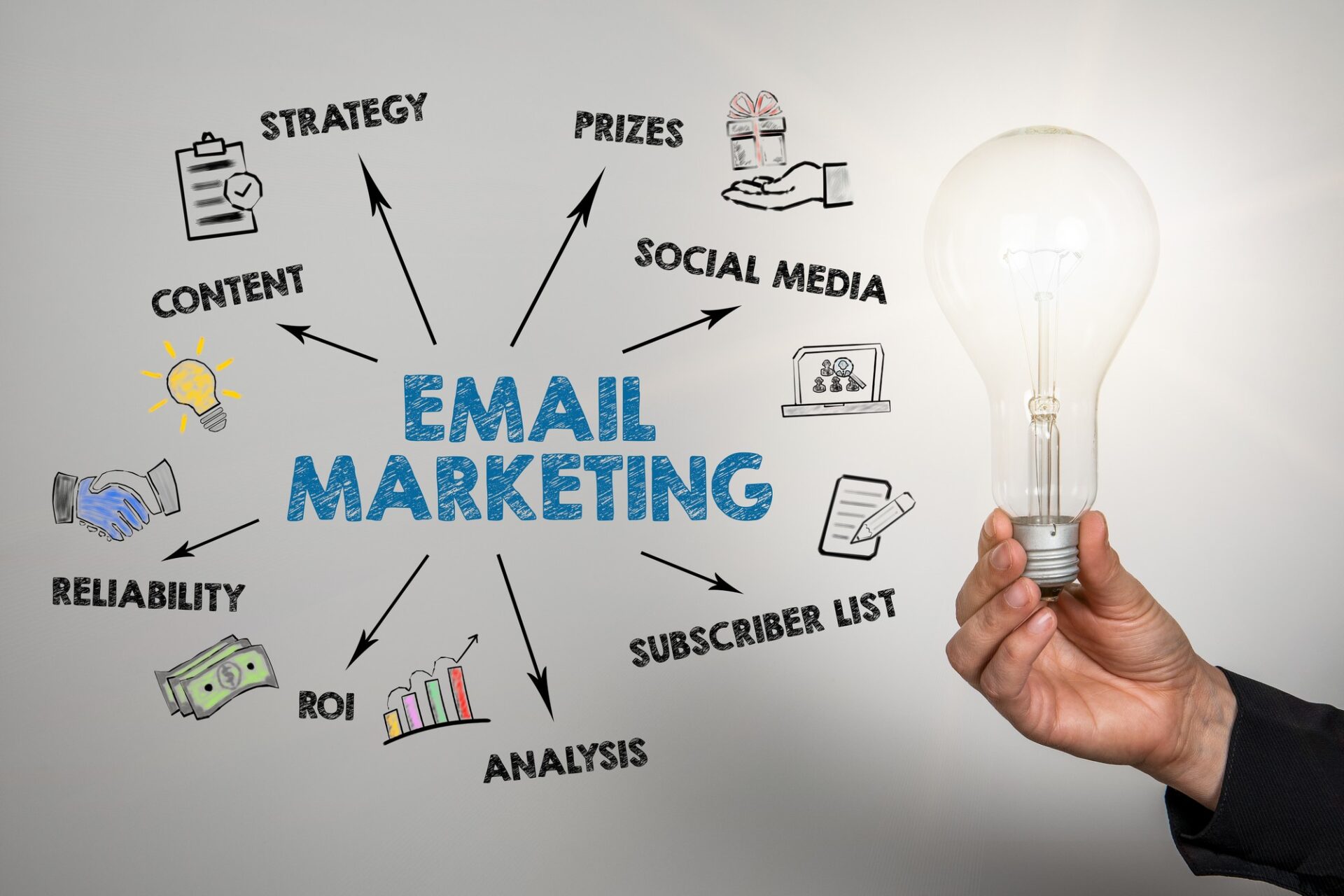
Defining Contacts
To effectively engage customers, defining contacts is crucial. This involves organizing and managing customer information to personalize communication. By maintaining a database of customer information, businesses can tailor their marketing strategies to individual preferences. Personalized communication plays a significant role in nurturing lasting customer relationships.
Creating detailed customer profiles helps in understanding their needs and behaviors. It allows businesses to send targeted emails based on demographics, past purchases, and engagement history. This level of personalization boosts customer loyalty and increases the chances of conversions. Moreover, having an updated database ensures that the right messages reach the right audience at the right time.
Engagement Tactics
Implementing engagement tactics tailored to each stage of the marketing cycle is essential for success. From awareness to retention, different strategies are needed to keep customers interested and involved. By analyzing customer behavior and preferences, businesses can customize their approach for maximum impact.
Tailoring engagement tactics based on customer preferences involves studying how customers interact with emails. For instance, some may prefer informative newsletters while others respond better to promotional offers. Understanding these nuances enables businesses to deliver content that resonates with their audience.
Creating interactive and personalized experiences is key to capturing and retaining customer interest. Interactive emails such as quizzes or polls encourage engagement and provide valuable insights into customer preferences. Personalizing emails with dynamic content based on user actions enhances the overall customer experience.
Analyzing the Customer Journey
Journey Mapping
Understanding the customer journey is crucial in lifecycle marketing. It involves mapping out the entire customer experience from start to finish. This process helps businesses visualize how customers interact with their brand at different stages. By analyzing the customer journey, companies can pinpoint key touchpoints and moments that influence the conversion rate.
Journey mapping in lifecycle marketing allows companies to gain insights into customer behavior and preferences. It helps identify critical touchpoints where customers engage with the brand. By creating visual representations of the customer journey, businesses can better understand the various stages customers go through before making a purchase decision.
Touchpoint Analysis
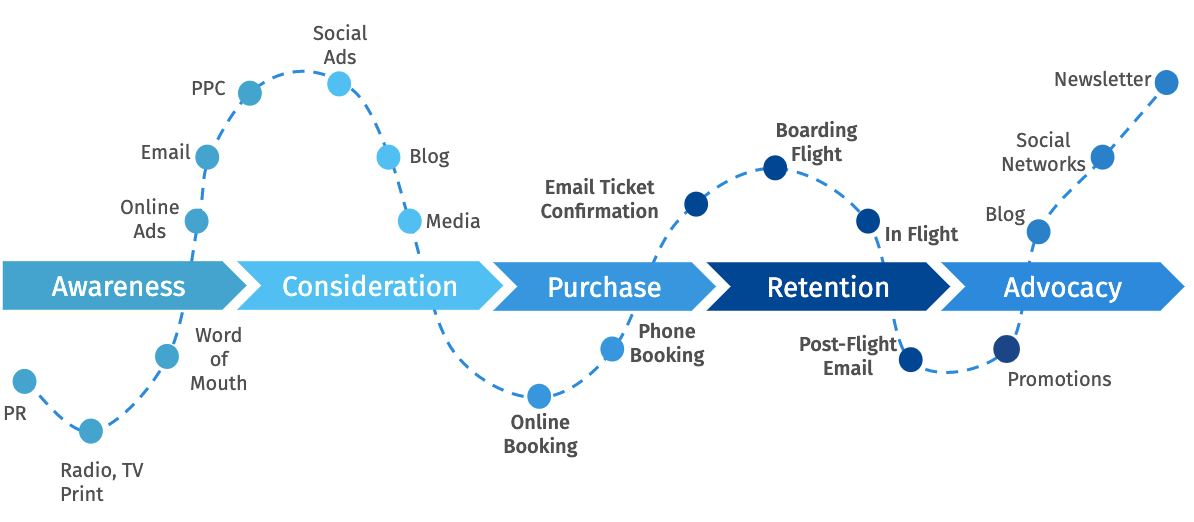
Analyzing touchpoints within the customer journey is essential for optimizing interactions. Touchpoint analysis involves evaluating every interaction a customer has with a brand, whether through emails, social media, or website visits. By examining these touchpoints, companies can identify areas for improvement and enhance the overall customer experience.
Touchpoint analysis plays a vital role in improving customer satisfaction and loyalty. Consistent touchpoints across various channels help reinforce brand messaging and values. By ensuring a seamless experience at every touchpoint, businesses can build trust and loyalty among their customers, leading to increased retention rates and higher conversion rates.
Optimizing Strategies for Lifecycle Stages
Customization Techniques
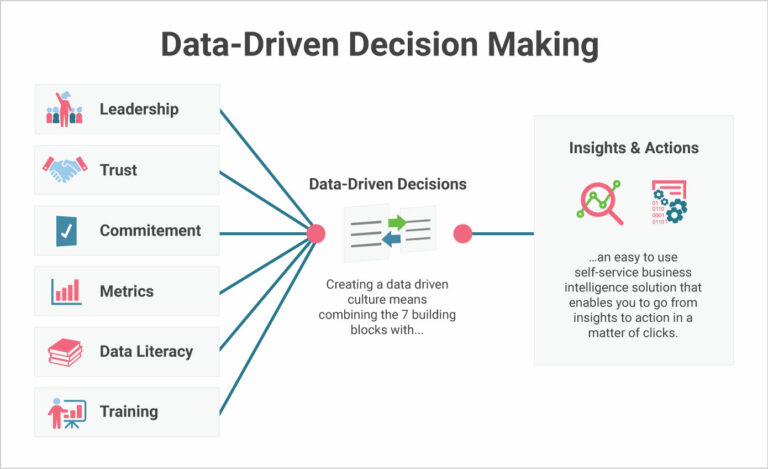
Marketing strategies can be customized by analyzing customer preferences and behaviors to create targeted campaigns. Personalization is crucial for enhancing customer experiences and increasing engagement levels. Utilizing data-driven insights allows businesses to tailor their marketing efforts effectively.
- Personalization enhances customer experiences.
- Data-driven insights help in tailoring marketing campaigns.
- Analyzing customer preferences aids in creating targeted campaigns.
Feedback loops play a vital role in lifecycle marketing, enabling businesses to gather and analyze customer feedback continuously. By understanding customer sentiments, companies can make necessary adjustments to their strategies, leading to improved customer satisfaction and loyalty.
- Gathering and analyzing feedback is crucial.
- Feedback loops help improve marketing strategies.
- Understanding customer sentiments leads to enhanced satisfaction levels.
Maximizing Your Marketing Strategy with MarketersMEDIA

MarketersMEDIA is a valuable tool for businesses looking to enhance their lifecycle marketing efforts. By utilizing MarketersMEDIA's press release distribution services, companies can reach a wider audience and generate more leads throughout the customer lifecycle. Whether you're looking to promote a new product launch, share company news, or simply boost brand awareness, MarketersMEDIA can help you achieve your marketing goals.
With MarketersMEDIA, businesses can easily create and distribute press releases that highlight key milestones, promotions, and events within their organization. This helps keep customers engaged and informed at every stage of the customer journey. Additionally, the wide reach of MarketersMEDIA ensures that your message is seen by a diverse audience, increasing the likelihood of attracting new customers and retaining existing ones.
In conclusion, incorporating MarketersMEDIA into your lifecycle marketing strategy can have a significant impact on your overall marketing performance. By leveraging the power of press releases and distribution services, businesses can effectively communicate with their target audience and drive meaningful results throughout the customer lifecycle.
Lifecycle Marketing Statistics
Lifecycle marketing is a powerful strategy that helps businesses build stronger relationships with their customers over time. By understanding the different stages of a customer's journey, companies can tailor their marketing efforts to meet the specific needs and preferences of each individual. According to recent statistics, 44% of companies that have adopted lifecycle marketing techniques have reported a notable boost in customer retention rates within just one year of implementation. This means that by focusing on engaging customers at every stage of their interaction with the brand, businesses are more likely to keep them coming back for more.
Moreover, the impact of lifecycle marketing goes beyond just retaining customers; it also has a significant effect on revenue generation. On average, businesses that have incorporated lifecycle marketing strategies into their operations have seen a substantial 30% increase in their revenue within the first six months. This surge in revenue can be attributed to the personalized approach that lifecycle marketing offers, allowing companies to deliver targeted messages and offers to customers based on their specific preferences and behaviors.
In essence, lifecycle marketing is not only about attracting new customers but also about nurturing existing relationships to drive long-term success. By leveraging data and insights to guide their marketing efforts, businesses can create more meaningful interactions with customers, ultimately leading to increased loyalty, higher retention rates, and improved revenue streams. Embracing lifecycle marketing as a core strategy can truly transform the way companies engage with their audience and drive sustainable growth in today's competitive market landscape.
Summary
You've now grasped the essence of lifecycle marketing, understanding its stages, crafting strategies, and optimizing plans. By delving into each phase of the customer journey, you've gained insights into tailoring content and email marketing for maximum impact. Analyzing these strategies has equipped you to refine your approach and enhance customer engagement across all lifecycle stages.
As you apply these principles to your marketing endeavors, remember that a well-thought-out lifecycle strategy can significantly boost customer retention and drive conversions. Keep optimizing your strategies based on data and feedback, ensuring that you adapt to the evolving needs of your audience. Embrace the power of lifecycle marketing to forge lasting connections with your customers and propel your business towards sustained growth.
Frequently Asked Questions
What is Lifecycle Marketing?
Lifecycle marketing involves understanding and addressing the different stages a customer goes through, from initial awareness to post-purchase loyalty, to optimize marketing strategies and enhance customer relationships.
How can Lifecycle Strategy Essentials benefit my business?
Implementing lifecycle strategy essentials helps in tailoring marketing efforts to specific customer stages, leading to improved customer engagement, retention, and ultimately, increased revenue for your business.
What are the key responsibilities of a Lifecycle Marketing Manager?
A Lifecycle Marketing Manager oversees the planning, execution, and optimization of marketing campaigns across various customer lifecycle stages. They analyze data, create targeted content, and collaborate with different teams to drive customer engagement and loyalty.
Why is Analyzing the Customer Journey important in lifecycle marketing?
Analyzing the customer journey provides valuable insights into consumer behavior at each stage. This data helps marketers understand preferences, pain points, and opportunities for personalization, enabling them to create more effective strategies that resonate with customers.
How can I optimize strategies for different lifecycle stages?
To optimize strategies for different lifecycle stages, focus on personalized communication, relevant content delivery, timely follow-ups, and seamless transitions between stages. By understanding customer needs at each phase, you can tailor your approach for maximum impact.
Free Press Release Template
Tell us where to send your PDF:
